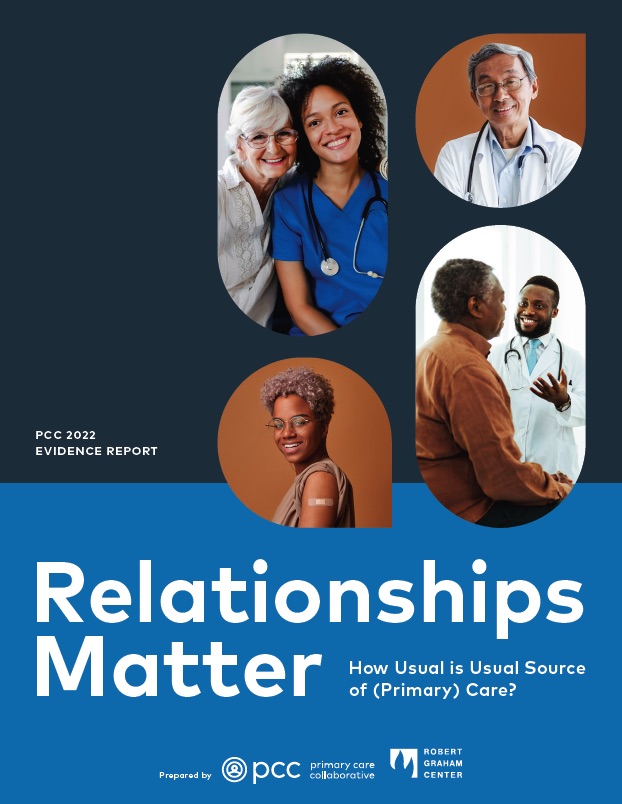December Lunch and Learn Discussion
The PCC hosted Mark Ebell, MD professor at the University of Georgia, College of Public Health, Frank Moriarty, PhD, senior lecturer in pharmacy and biomolecular sciences at the Royal College of Physicians in Ireland, and Karen Swietek, MPH, PhD, senior health economist at NORC for our third Lunch and Learn discussion. Lunch and Learn co-chairs Jack Westfall, MD, MPH, Robert Graham Center and Irene Dankwa-Mullan, MD, MPH, IBM facillitated the discussion.
The group discussed one primary care clinical article and one health services research article. Do Medical Homes Improve Quality of Care for Persons with Multiple Chronic Conditions? Contributes to the current body of evidence on the patient centered medical home and A comparison of contemporary versus older studies of aspirin for primary prevention addresses newer studies of aspirin for primary prevention.
Summary of Discussion Highlights:
Do Medical Homes Improve Quality of Care for Persons with Multiple Chronic Conditions?
- In 2018, over 50% of adults in the United States reported having at least one chronic condition and more than a quarter had at least two. Research has shown that having multiple chronic conditions is associated with poor health outcomes, a higher risk of death and higher healthcare costs. Managing chronic conditions accounts for about 75 cents of every dollar spent on health care services in the US.
- Medical Home enrollees are more likely to receive almost all process-based quality of care metrics for both physical (diabetes and hypertension) and behavioral health conditions (depression and schizophrenia).
- The medical home is an effective way to improve quality of care for patients with multiple chronic conditions. There is a sizeable and growing body of research demonstrating the medical home can improve quality for conditions that require long term management due to its team-based structure and emphasis on coordination of care.
- Payment reform needs to catch up and we should be incentivizing this model for care delivery.
A comparison of contemporary versus older studies of aspirin for primary prevention
-
Harms of aspirin use were consistent between old and new studies
-
There is no longer any reduction in cancer incidence or mortality
-
There was a consistent decrease in ischemic stroke, although small
-
There is no longer any reduction in non-fatal myocardial infarction (heart attack)
- For every 1200 people who are taking aspirin for primary prevention for five years, you'll see four fewer major adverse cardiovascular events (MACEs), three fewer ischemic strokes, but three more intracranial hemorrhages and eight more major bleeding events. On balance, aspirin should no longer be recommended for primary prevention of cancer or cardiovascular disease.
- 2021 Draft Recommendation Statement of US Preventive Services Task Force
- For adults aged 60 years or older, The USPSTF recommends against initiating low-dose aspirin use for the primary prevention of CVD in adults age 60 years or older.
- For adults between the age of 40 to 59 years with a 10% or greater 10-year cardiovascular disease (CVD) risk the USPSTF recommends the decision to initiate low-dose aspirin use for the primary prevention of CVD in adults ages 40 to 59 years who have a 10% or greater 10-year CVD risk should be an individual one. Evidence indicates that the net benefit of aspirin use in this group is small. Persons who are not at increased risk for bleeding and are willing to take low-dose aspirin daily are more likely to benefit.
Senior Lecturer, Royal College of Surgeons in Ireland
Frank is a pharmacist and senior lecturer at the School of Pharmacy and Biomolecular Sciences. He is also a visiting research fellow at The Irish Longitudinal Study on Ageing (TILDA), where is lead of the medications working group, and was previously senior research fellow at the HRB Centre for Primary Care Research at the Department of General Practice, RCSI. Frank completed his undergraduate at the School of Pharmacy and Pharmaceutical Sciences, Trinity College Dublin, and registered as a pharmacist having completed his MPharm at RCSI. Following a period of working in community pharmacy, Frank undertook his PhD as part of the SPHeRE programme in RCSI, the national doctoral training programme in population health and health services research. read more
Chief Health Equity Officer/Deputy Chief Health Officer , Merative (formerly IBM Watson Health)
In her role at IBM Watson Health, Dr. Dankwa-Mullan is responsible for the global strategy for driving building clinical evidence for Watson Health solutions. This is accomplished through evaluation research, real-world evidence studies and implementation studies to support evidence-based practices to transform health care. She works with multidisciplinary teams at the interface of big data, cognitive computing and machine learning technology to inform healthcare delivery and clinical decision-making.
read more
Jack Westfall is a family doctor in Washington, D.C. He completed his MD and MPH at the University of Kansas School of Medicine, an internship in hospital medicine in Wichita, Kansas, and his Family Medicine Residency at the University of Colorado Rose Family Medicine Program.
After joining the faculty at the University of Colorado Department of Family Medicine, Dr. Westfall started the High Plains Research Network, a geographic community and practice-based research network in rural and frontier Colorado. He practiced family medicine in several rural communities including Limon, Ft. Morgan, and his hometown of Yuma, Colorado. read more
Senior Health Economist, NORC
Karen Swietek is a senior health economist at NORC at the University of Chicago with experience in secondary data analysis, quasi-experimental study design, and evaluating Medicaid programs. Her research focuses on integration of primary care and behavioral health services, alternative payment and delivery models, and racial disparities in quality of care.
Since joining NORC in 2011, Swietek has worked on several multi-site evaluations for the Centers for Medicare & Medicaid Services. She is currently the quantitative team lead for the Rhode Island 1115 Medicaid Waiver Evaluation and a quantitative researcher for the Vermont All-Payer Accountable Care Model Evaluation. read more
Professor, University of Georgia College of Public Health
Dr. Mark H. Ebell is a graduate of the University of Michigan’s Medical School, Family Medicine Residency, and School of Public Health. He is currently a Professor in the Department of Epidemiology and Biostatistics in the College of Public Health at the University of Georgia. Dr. Ebell is Editor-in-Chief of Essential Evidence and Deputy Editor of the journal American Family Physician. He is author of over 500 peer-reviewed articles and is author or editor of eight books, with a focus on evidence-based practice, respiratory infections, and clinical decision-making. Dr. Ebell served on the US Preventive Services Task Force from 2012 to 2015, and in 2019 was a Fulbright Scholar at the Royal College of Surgeons in Ireland in Dublin, Ireland.
read more
What's New
March 19, 2024
February 28, 2024
February 22, 2024 | Conversations on Health Care
- Page 1
- ››









